In my favourite book about travelling in India, William Sutcliffe’s ‘Are you experienced?’, the anti-hero Dave talks about how nobody visits the centre of India, described as “full of poor people growing food”.
The state of Madhya Pradesh is bang in the centre of India, mostly unknown, and indeed virtually untrammelled by foreign tourists. My next few posts are going to talk about my weeks in that region. To begin with, I was invited to the Madhya Pradesh Travel Mart.
Travel marts are gatherings where all the travel agents of the world, and a few press, turn up to see the tourist offerings, that is sites, tours, hotels, amenities, of different locations.
I’ve been to the enormous World Travel Mart in London a couple of times. It’s not a lot of fun; it’s too big and too stuffy, like visiting a department store at Christmas. You attend press conferences containing various representatives and ministers of tourism with the hope of getting a couple of press trips out of it. So far it’s not worked for me. I probably don’t know how to do it properly. Lots of travel bloggers go there and thrive.
So far the only press trip I’ve been offered is to Madhya Pradesh. If you are thinking that my life is a dream, you are both wrong and right. Yes I do get to go to great places, but press trips tend to be hard working accelerated affairs, with long days and heavy schedules, where you get little sleep, can only stay in a hotel for one night. They really aren’t holidays.
This press trip I had to pay my own plane fare in advance, hoping that I’ll get it back after 30 days. Fingers crossed.
Bhopal
Most people have only heard of Bhopal because of the terrible chemical disaster in 1984, in which thousands of people died. The effects are still felt to this day. So it isn’t your typical holiday destination.
Getting to Bhopal is arduous. I took an overnight flight to Delhi then had to wait 11 hours for a night flight to Bhopal. During my wait I got the metro into Delhi, to Chandni Chowk market, but soon felt defeated by the heat, noise, bustle and pollution.
India has a population of over a billion. It shows. You can only do about two hours of India before you need a lie down. India needs to be done slowly.
On the night plane to Bhopal, I was the only non-Indian. We had grey pashminas as plane blankets and my fellow passengers ate delicately from their tray of plane food with the ends of their fingers. There were instructions on how to use the plane toilets. I arrived around midnight. The taxi drive from the airport revealed a dusty, dirty town full of shacks lit yellow by solitary light bulbs in the new moon darkness.
I was informed by the Travel Mart WhatsApp group that I should get up at 5.30 am to go on a historical tour of Bhopal. Wearily I dragged myself out of bed. I was desperate for a cup of tea. But the bus was waiting. We sat in it. It didn’t leave till 7am.
‘This is India’ shrugged a local.
We chugged along to the second largest mosque in the world, the Victoria era Taj-ul-Masajid. While it was beautiful, made from sandstone and marble, with two tall pink minarets, there was rubbish and rubble everywhere around the building. Throughout my trip, I saw dirty nappies, plastic bottles, flip-flops, discarded around holy shrines.
This mosque was built by the Begums of Bhopal , a series of queenly Islamic rulers in the mid to late 19th century. During the day, little boys from the madrasa (Islamic school), in pale blue cotton kurtas, rocked back and forth reciting the Koran.
Returning to the Jehan Numa Palace hotel, I had my first Indian breakfast with masala chai, steamed idli (a soft rice cake), yoghurt, fruit and pickle.
The rest of the day was dedicated to appointments with assorted tour operators at the MP Travel Mart. Except it wasn’t. I couldn’t find the booths, in fact not all of the representatives had booths. Nor were they wearing their badges. I gave up looking for the people with whom I’d made appointments and randomly sat down to talk.
A large area was dedicated to a buffet lunch of Indian food: delicious creamy paneer curry and for pudding, spiced sweet rice pudding ‘kheer’.
On preparatory emails for the travel mart, we were asked to pick from a selection of ‘FAM’ trips – short for familiarisation trip. I picked one going to Pench National Park. Mine was leaving, I was told, at 3.30pm that afternoon. I’d spent less than a day in Bhopal.
I got to our coach at 3.15pm thinking, this is in plenty of time, everything in India is late. On stepping onto the bus, all the seats were filled with Indian travel agents, and the only seat free was the dreaded back seat.
The back row of a bus in the UK is the naughty step, where the mischievous kids sit and eat their packed lunch as soon as setting out for a school trip. The back row of an Indian bus is a bone-shaking, spine-jarring experience due to the state of the roads, pitted with holes, the relentless tuneful horn on repeat like a jingle, the creaky blare of Indian pop, the broken air conditioner shaft and the winding around the skinny elderly cows that are abandoned to wander down the highway.
We were supposed to arrive at 9pm. But at 9pm we were stuck for two hours among traffic waiting to cross an old bridge. The new bridge is under construction and the old bridge could only be accessed one vehicle at a time. You’d have thought, as this was clearly not a new situation, that the trip planners would have foreseen this hitch.
The mostly male travel agents seemed to know each other, there was an atmosphere of a work ‘jolly’.

Hill Station Pachmarhi
Pachmarhi is a hill station to where during British colonial times, people would move during summer, for it was cooler at a higher altitude.
At midnight the bus juddered through the gate of the Hotel Highlands which looked like an army barracks. Reviews on Trip Advisor were not complimentary. Just looking at their website I see a photo of a room that does not reflect my experience. My room stank of mould and mothballs. I looked at the stained towels, the threadbare sheets, the brown and shabby decor and felt profoundly depressed. I was tired and hungry.
The bathroom, like many Indian bathrooms contained a series of plastic buckets, I’m not sure why as there was a shower of sorts. If you wanted a hot shower, you had to get a stool and turn on an ancient boiler and wait 30 minutes.
It felt like the kind of place that had scabies or bedbugs. Having experienced both multiple times (I’d even packed a small plastic ziplock bag of bedbug powder), I knew the signs. I tried to inspect the sheets but gave up after a few minutes, fatigue and lack of light defeated me. Notices saying ‘Beware the monkeys’ swayed in the breeze.
Not wanting to spend any time in my room, I wandered around the barracks. Then I hear noise and light. I peer through a lit doorway. There’s food! The travel agents are sitting down and eating. Nobody has told me or the other foreigners that there was something to eat at this hour.
The next morning, we were obliged to tour several luxurious hotels, built in the colonial style with shiny floors and pale painted walls. A series of excuses were made:
‘Oh none of these places had enough room to house you all’.
But at our next stop our large group of 30 is separated into different hotels. We all looked enviously at the clean, large, light rooms where you didn’t fear taking off your shoes.
This morning’s major sight was the Pandav caves, a series of five caves carved out as Buddhist temples. Without an English speaking guide, it was hard to see the interest but the climb to the top revealed a nice view.
The next site was to climb steep steps down to a waterfall. As no printed schedule was given, and guides didn’t really speak English, I’m not sure where I was.
At the top, in the bright sun, the travel agents wanted one of their interminable group shots. Sometimes the travel agents would plunge an advertising board into your hands and stand next to you grinning. I felt like a western prop. I didn’t mind posing for pictures with the odd Indian tourist, although why they wanted this I don’t know. This time I refused the travel agent group selfie, I was overheating and felt I’d been in enough of them already.
I got a head start on climbing down, knowing I’d take longer than the rest of them. At the bottom I walked into the waterfall fully clothed. I needed a shower. Everyone stared. Some of the male travel agents joyfully ripped off their clothes and climbed over the slippery rocks to the waterfall.
Again I made a head start on the upwards climb, breathing rhythmically through my nose.
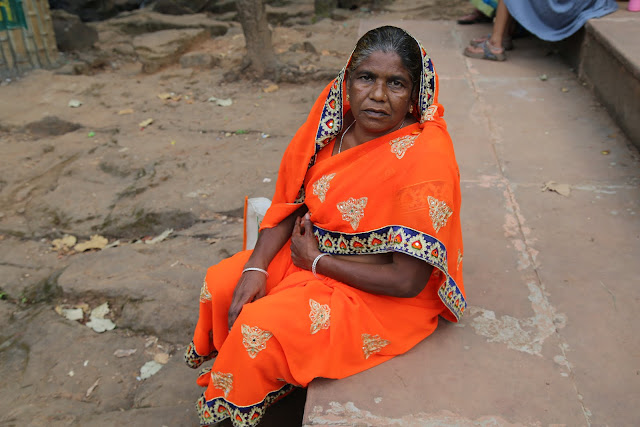
After lunch, we visited a Hindu shrine to Shiva which was again a steep climb. I’ll be quite fit by the end of this trip I consoled myself. Rock-side stalls sold ‘jungle onions’ which were of medicinal use for achy knees, or circles of a dry sticky root to eat (‘we only eat these when all the crops have failed’) which prickled my skin.
At the bottom I entered into a damp cave where some kind of sadhu daubed my forehead with bright orange powder and gave me a handful of holy Rice Krispies known as ‘Prashad’. I accepted the blessings and staggered upwards.
On one set of steps I could see that somebody had vomited from the exertion of the climb. Halfway up, I sidestepped into a shrine to Hanuman the monkey, where I was shown a heavy boulder that somehow floated in water. Hurry Hurry I was told. We must get on.


We drove to a field where there were different sporting activities: all-terrain bicycles, bungee jumps, hang-gliding.
‘You want to do one of these?’
‘Sure’ I replied.
‘This will cost 500 rupees.’
I had no idea how much that was (about £5). While the cost wasn’t much compared to the UK, usually on a press trip you aren’t asked to pay for activities. I was too tired anyway.

The last place of that day was Dhoopgarh, which has two views: the sunrise and, from the other side of the mountain, the sunset. The view of the Satpura ‘100 mountains’ range was indeed very beautiful, blue hills in the distance, leafy jungle in the foreground, yellow paths winding through the ochre soil.
That evening the travel agents sat around a bonfire drinking rum. Wanting to avoid this, I’d found a precious spot in a corner of the restaurant where I could charge my laptop and access the internet to publish a blog post. But one very drunk travel agent repeatedly interrupted me, tottering to the table, learning over me, bawling nonsense. At first I tried to be polite but by the sixth time I stood up and ordered him out of the room. My inner memsahib was emerging.
Drowsing I was awoken at 1.30 am by the sound of multiple WhatsApp texts from one of the Travel Mart organisers barking at me for not having made sufficient arrangements for where to go after the Fam trip.
‘It’s not my job to help you’ she said.
She was a tourism marketing employee. What was her job then?
We had to be up at five am in the morning to travel to our next destination, Pench.
She ordered me to tell her by the next morning what precisely I was doing after the Fam trip ended.
‘Look it’s 1.30 in the morning and I have to be up in three and a half hours’ I wearily texted back.
Before the trip she had assured me that it would be easy to make arrangements while there. But there was no time, and no internet to send emails. She accused me of lying about the internet.
‘How is it that you can use WhatsApp?’ she scolded.
I don’t know. I don’t know how the internet works. Now I felt upset and abandoned. I’d manage but I’m unused to being told off as if I’m a naughty child, by text, in the middle of the night.
A nice room in Pench

I’m in the jungle, in Pench, in Jungle Book/Rudyard Kipling country. It’s 33ºc and my feet are swollen. I’ve just come off a six hour bus ride where I took my habitual place on the back row.
During the journey the travel agents, no doubt hungover, are shouting at each other; I thought there was going to be a fist fight.
The bus was supposed to leave at 6 am but of course we are working on Indian time, so it left at 6.30, the travel agents sleepily made their way onto the bus, unlike me, not fearing the wrath of the organisers.

We check into the Waxpol Riverwood Retreat. It’s lovely. You are greeted at the entrance with a cool wet flannel and a glass of lime water. But I’m becoming paranoid. The travel agents talk to each other quickly in Hindi, a language of which I possess about 25 words so far. I’m given a key for Room 8. Two of the travel agents gabble to each other and decide I will be in another room. I stand my ground. This is the second time this has happened.
‘No. I want the room I was assigned’. I insist.
‘But we want to be next to each other’, finally admitted one of the travel agents, the lone Indian female.
‘Why? Are you having an affair?’ I demand rudely.
‘No but we are close friends, we know each other.’
I found this odd. Are Indian men and women ever friends?
The man is the self-appointed group leader of the travel agents. He organises their private WhatsApp group which, of course, I’m not a part of. Now I understand why they know where to go, what time to go, what’s happening, if there was food, etc.
We are given half an hour to bolt something down then back out again for the jungle trip in a vehicle they call a ‘Gypsy’ which is in fact a jeep. I sat in the heat of the sun. My distended feet are killing me, so I put them on top of the closed plastic cooler which of course was in front of my place.
‘Get your feet off that cooler, that is disgusting, ugh our drink and foods is in there!’ said self-appointed leader.
At this point dear readers I lost it.
The travel agents didn’t have to make sure they had charged equipment to take pictures, they didn’t have to write anything up, they didn’t have to take notes, they didn’t struggle with the Internet, (my Indian sim wouldn’t activate), they were used to the temperature, they hadn’t crossed time zones, they hadn’t travelled 24 hours to arrive in India, they spoke the language and felt comfortable and knew each other.
I on the other hand, as a lone female Western traveller felt upset, scared, filthy, tired and hot.
I climbed down from the jeep and screamed:
‘I’ve spent three fucking days at the back of the bus, I’ve done 30 hours travelling in four days, my feet are painful and I’m sick of all your drunken shouting behaviour’.
To Mr Self-Appointed Leader I said: ‘Stop trying to control my trip. You aren’t the boss of me’.
I looked at all the jeeps and yelled: ‘This is all so unprofessional. Who is organising this trip? Is anyone in charge here? Anyone?’
They just looked smug.
I went to the shady passenger seat in the jeep and told a recumbent chubby travel agent to step out.
‘I’m going to sit here. Not you. I need shade’. I ordered. He got out.
Self-Appointed Leader said ‘Lets please calm down and have a good trip madam’.
Chubby said, appeasing: ‘Look, I gave you my seat’
‘No you didn’t give me your seat actually. I had to beg you for the seat in the shade.’ I riposted accurately.
There was a pushy ruthlessness, lacking even basic hospitality rules, about the travel agents which I recognised as particularly Indian. India is, in my opinion, the most capitalist country in the world. It’s a tough nation of strivers and survivors. When I last visited 32 years ago, ladies were treated well, ushered to the front of the queue. This seems to have disappeared. Now middle class Indian men treated women as equals: I won’t give way for you. The courtly respect has gone. The front pages of local papers were full of #metooladies stories.
We then drove slowly around the reservation, which has no walls but shuts at six. Which is pretty bloody stupid as most animals only start to move about at the end of the day.
It was baking hot. There were no animals.
The guide said with quiet desperation: ‘Look there is a spider web’.
Admittedly it was quite a big one, strung between trees but still.
‘This is pointless’ I grumped.
We were never going to see tigers.
I dozed, I couldn’t be arsed anymore.
We saw monkeys.
We saw spotted deer.
We saw a tiger print.

Towards the end of the drive, nearing 6pm, we saw a tiger.
The guide started talking very fast to the driver ‘Go back, go back’.
The jeep reversed quickly, kicking up the sandy soil. The tiger was coming towards us. I felt a bit frightened. It wasn’t like Africa, this jeep was open and low to the ground, there was no protection.
I gingerly tried to take pictures above the windscreen but the travel agents shouted at me ‘Sit Down’ because you know, they were the important ones. (I later heard that some of them weren’t even travel agents, they were just hangers on, getting a free trip).
Seeing the tiger made me understand the term ‘catwalk’. The animal strolled forward with a regal super model insouciance, one paw crossed in front of the other. We drove backwards, the tiger came towards us, then finally headed off into the grass, black stripes rolling above the green blades.
The atmosphere changed in the jeep. People were exhilarated, excited, felt lucky. I still hated them though.
I started to ask questions of the guide.
‘Do the tigers ever attack?’
‘No’, he said, ‘they have plenty to eat here. They eat the deer.’
‘How often do they eat a deer?’
‘About twice a week.’
‘There are 40 tigers on the reserve, so that means they eat 320 deer a month?’
‘Yes.’
Poor deer I thought. They looked happy enough, gambolling around in cartoon Bambi fashion. But they were basically caged meat, strolling ready-meals.
‘If a tiger eats a human we have to kill it’, said the guide. ‘Because if they get the taste for our salty blood, they become dangerous.’
That night over dinner, the man who gave up his seat for me said:
‘Today I also had to be in the back seat. It was terrible. I didn’t realise how bad it was.’
He continued: ‘Indians are very noisy. We shout at each other all the time. It’s very difficult for westerners.’




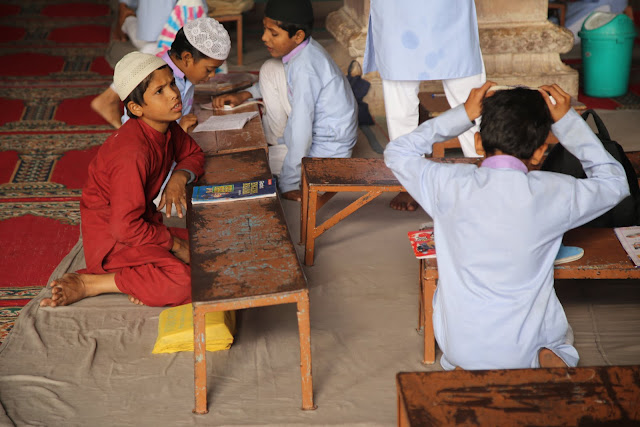
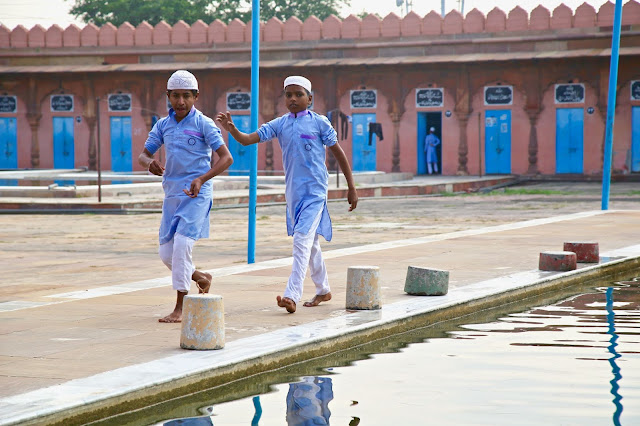
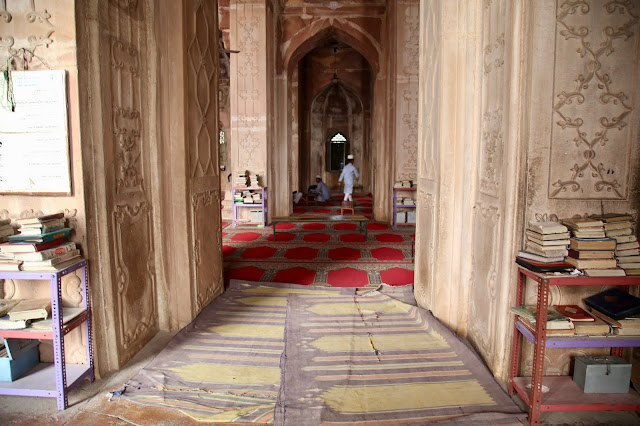
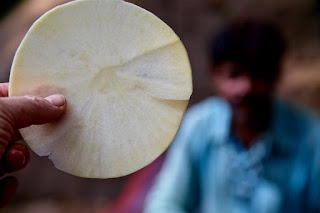
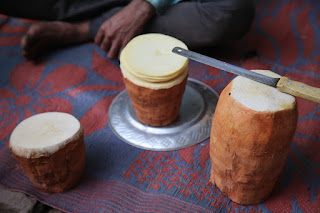
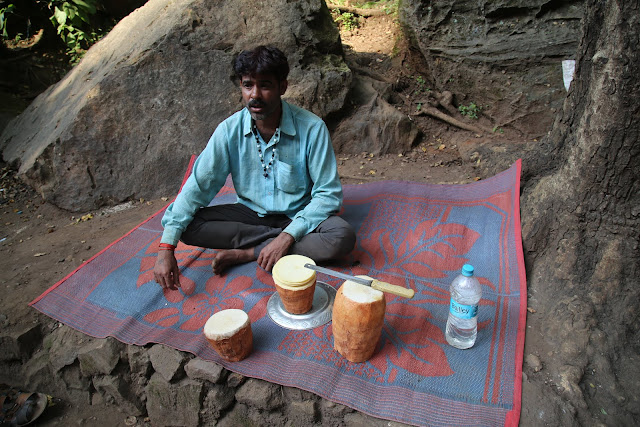
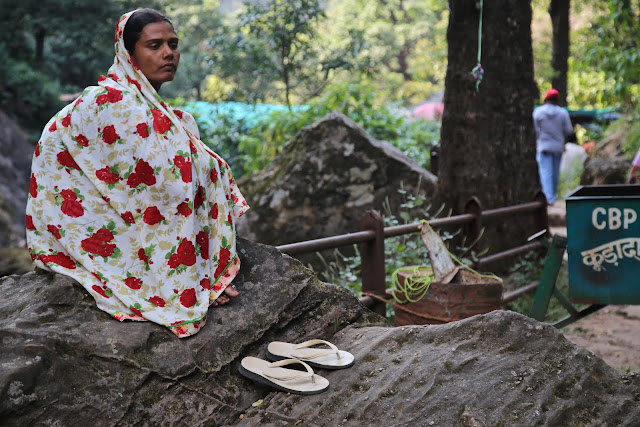
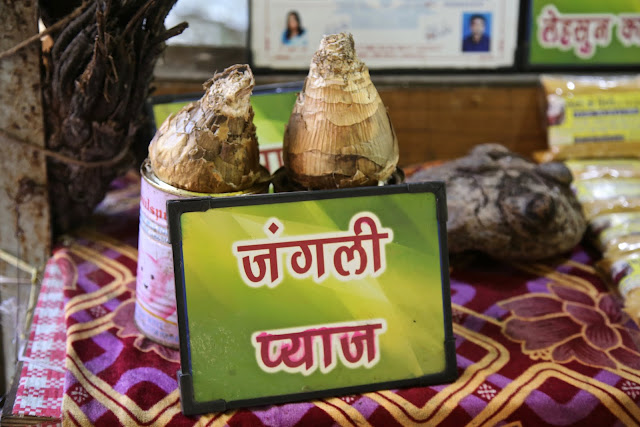
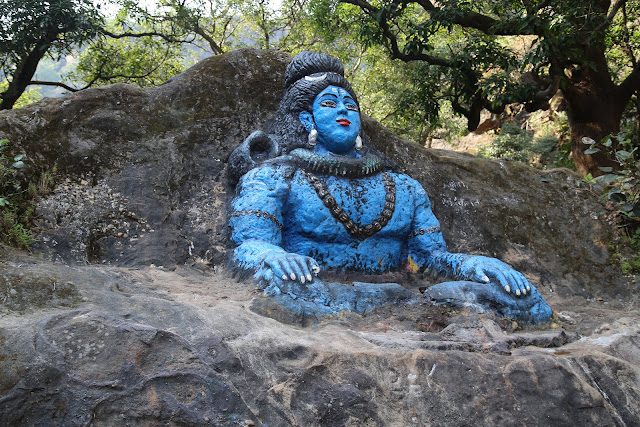



Wont be going there! Big bullies.